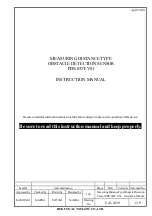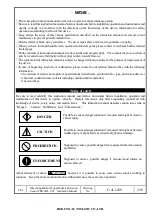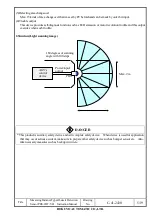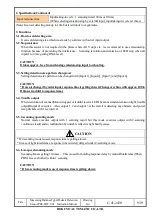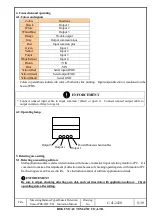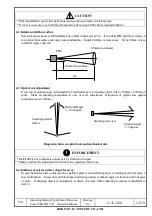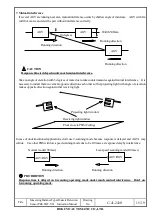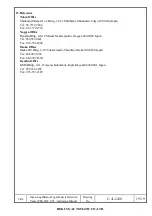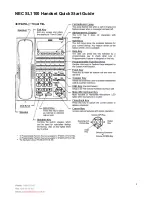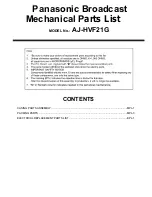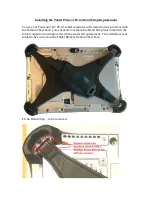
HOKUYO AUTOMATIC CO.,LTD.
< Contents >
1. Caution for handling
It may cause misdetection even out of detection area because of characteristics in case that there is strong light
from mirror surface or retro-reflection plate. In that case, take measures to avoid such situation.
DANGER
* This sensor is possible to cause malfunction or mis-detection by reasons of strong disturbance light, electric
noise or mechanical vibration.
* Make sure that the power source is off when maintenance and inspection.
* Take caution to handle the device and don't hit against or drop off.
* This device can't detect a dead space of view in beam scanning angle. If necessary detecting area isn't enough,
don't use it.
CAUTION
* This device doesn't operate for approx. 1 sec after putting power source on. Don’t use during this period.
* Use power source with 2A or more, current capacity. Inrush current flows when putting power source in.
Voltage min. and max. value is 12 to 24VDC.
* Avoid to install at the places where strong light over rated enters into reception part. It may cause
mis-operation.
PROHIBITION
* Don't decompose this device. It may cause any troubles by short-circuit. Moreover it may cause malfunction
of device out of warranty.
* Keep this device out of soaking in water, oil or scales. Light-receiving amount is reduced and it may cause
mis-detection. Also, inner circuit corrodes and it may cause any troubles.
* Don't install or keep this device at the place where over rated heat, vibration or shock. It may cause any
troubles or malfunction.
* Avoid to use under solvent vapor and corrosive gas.
Title
Measuring Distance Type Obstacle Detection
Sensor PBS-03JT-V01 Instruction Manual
Drawing
No.
C-41-2430
6/19
Page 2
Page 2
Page 4
Page 4
Page 6
Page 6
Page 7
Page 9
Page 11
Page 11
Page 13
Page 15
Page 16
Page 17
Page 17
Page 18
Page 19
Notice
Notice of safety
Introduction
General/Structure
Contents
1. Caution for handle
2. Specifications
3. Functions
4. Connections and operating
5. Detecting area setting
6. Caution for installation
7. Mutual interference
8. Pin arrangement of RS-232C
9. Input/Output circuit
10. Q and A
11. Troubles
12. Reference

